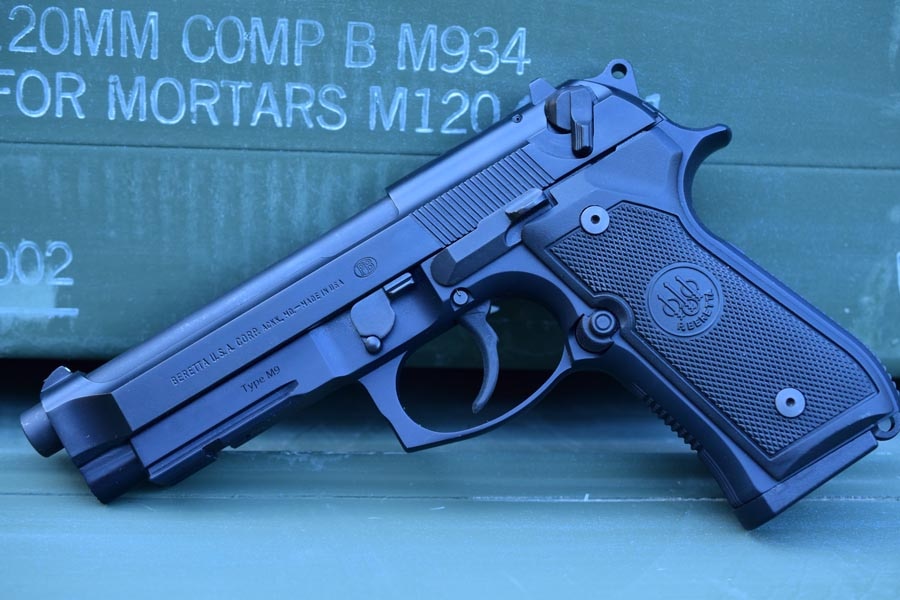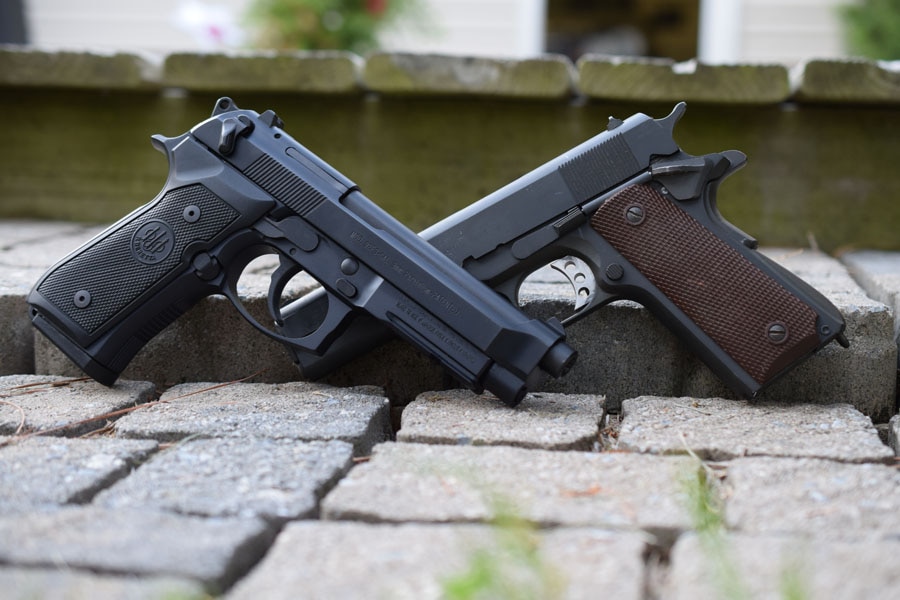When the United States military chose the Beretta Model 92 to replace the all-American M1911 as the standard sidearm, people lost their minds. It was as if society forgot about the M16’s failure in Vietnam and all the men who died as a result, did so for nothing. Once again the military bought into some gun company’s marketing hype and ditched a successful design for a smaller-caliber weapon with no perceivable gains.
The M1911 had seen our troops through WWI, WWII, Korea, Vietnam and even earned a reputation for stopping enemies in their tracks. After all that, the brass wanted to ditch the hard-hitting workhorse for some Italian design based off a Nazi pistol that the 1911 clearly outclassed?!
Personally, I’m not happy with the decision, but I understand why they chose to go with it. Regardless, from a soldier’s perspective, the decision to adopt the Beretta M9 and phase out the beloved brainchild of John Moses Browning seemed insane. Why would someone ever downgrade equipment?
When the military terminated the use of the M1911 in 1979, the Cold War showed no signs of ending. Experts believed the next conflict with the Soviets would take place in the forests and plains of Europe, against an adversary that would use its numerical superiority to its full advantage. Military strategists saw the M16’s adoption as a force multiplier — each man could carry more ammo and store 50 percent more ammo in standard magazines.
Such a weapon would have been invaluable to troops in Korea facing Chinese human-wave attacks. Military tacticians reasoned that if reducing a weapon’s caliber and increasing its capacity worked for the infantryman’s rifle, the same would work for their sidearm. It’s important to note that this all took place during the dawn of the wonder-nine — the age when police departments ditched their .357 Magnum revolvers for steel-framed high capacity 9mm semi-automatic pistols. With Beretta releasing the M92 only four years prior, it was a natural choice with its 15-round magazine. Military strategists reasoned that the increased capacity offered each soldier more than double the capacity of the M1911 before reloading, a godsend when overrun.
People who argue stopping-power and round lethality fail to grasp the concept of modern warfare. Modern combat is more about logistics and supply, rather than an individual soldier’s capability. The only time individuals and their gear are crucially important are in special operations. Even in that instance, they are no more ‘important’ than a single guided munition.
For a modern comparison, think of NATO as a fire team of four soldiers going into a small skirmish. Germany has their soldier with his G36 rifle, England has their bloke with an SA80, the Frenchman carries a FAMAS and the U.S. infantryman possesses an M4A3 carbine. While some of these rifles can swap magazines, all can exchange ammunition. It would not be pertinent for a U.S. soldier to carry a special M4 chambered in .270 Winchester when they are going into a firefight, because finding ammunition in a pinch would be a logistical nightmare.
Combat theory aside, choosing a 9mm handgun for the plains of Europe makes more sense given the ubiquity of 9mm ammo in both Germany and NATO-aligned countries and the flatter-shooting nature of the higher-velocity 9mm.
Furthermore, sidearms are a last-ditch weapon, often given to non-frontline individuals with little to no combat experience as a means of self-defense. In the hands of a cook (Steven Seagal notwithstanding), a gun with less recoil and more rounds is a more appropriate tool than a gun with less rounds even if the rounds are more potent.
While I love the M1911, its shortcomings in open warfare are fairly apparent. On the other hands, the M9 is not the ideal replacement. I would have preferred the U.S. build a new, double-stack 1911, sadly NATO logistics would prevent it. While the forces of NATO prepared for a global war against the Soviet Union, it made sense to standardize munitions for the sake of interchangeability.
The M1911 in its military configuration has minuscule sights and limited capacity. Improvements to the design made by competitive shooters were only just becoming widely known and wouldn’t be commonplace for another decade. Given the technical limitations of the time and the predicted opponent, abandoning the M1911 as the standard military sidearm of the U.S. military made sense, even if the soldiers didn’t agree with it.
The post Why the U.S. military made the right decision ditching the M1911 appeared first on Guns.com.



